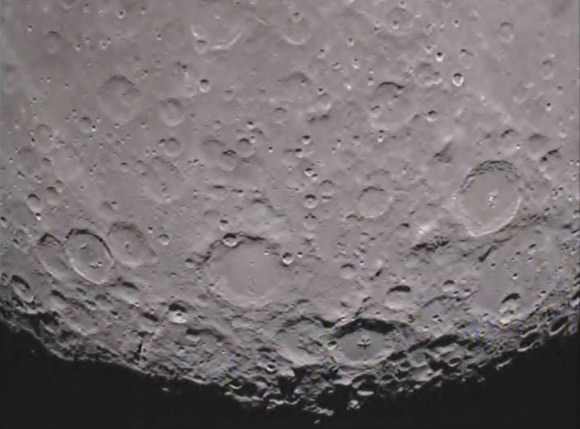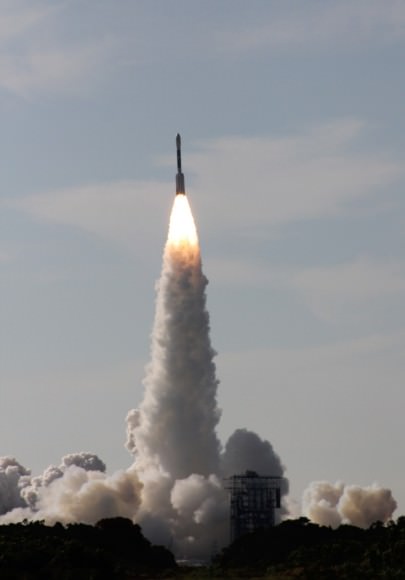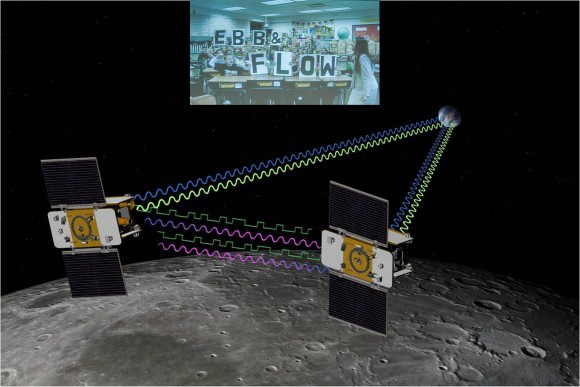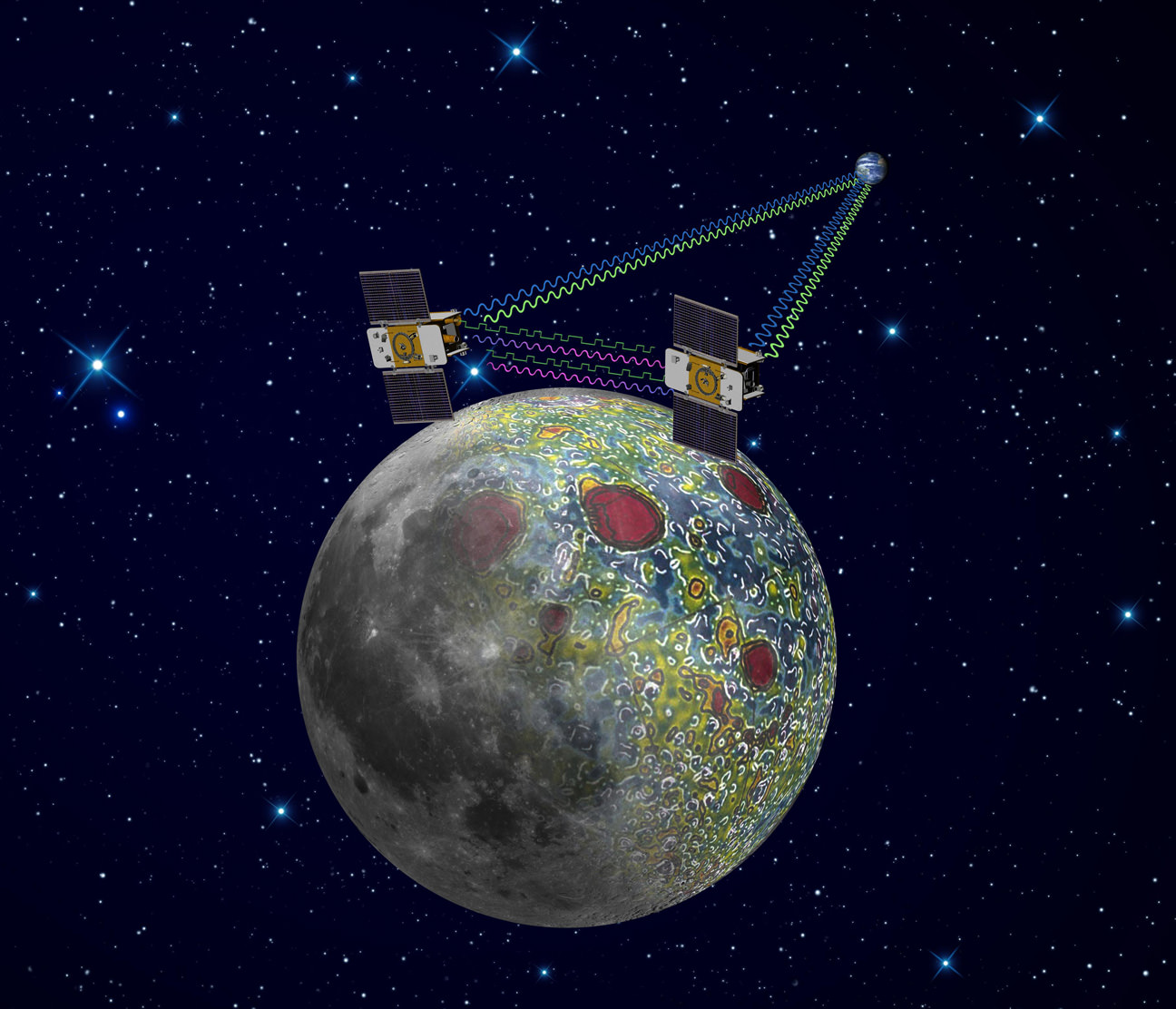[/caption]
NASA’s twin lunar orbiting GRAIL (Gravity Recovery and Interior Laboratory) spacecraft christened Ebb and Flow have kicked off their science collection phase aimed at precisely mapping our Moon’s gravity field, interior composition and evolution, the science team informed Universe Today.
“GRAIL’s science mapping phase officially began Tuesday (March 6) and we are collecting science data,” said Maria Zuber, GRAIL principal investigator of the Massachusetts Institute of Technology in Cambridge, to Universe Today.
“It is impossible to overstate how thrilled and excited we are !”
“The data appear to be of excellent quality,” Zuber told me.
GRAIL’s goal is to provide researchers with a better understanding of how the Moon, Earth and other rocky planets in the solar system formed and evolved over its 4.5 billion years of history.
NASA’s Dawn spacecraft is currently mapping the gravity field of Asteroid Vesta in high resolution from low orbit.
Despite more than 100 missions to the Moon there is still a lot we don’t know about the Moon says Zuber, like why the near side is flooded with magma and smooth and the back side is rough, not smooth and completely different.

The formation-flying spacecraft will make detailed science measurements from lunar orbit with unparalleled precision to within 1 micron – the width of a human red blood cell – by transmitting Ka-band radio signals between each other and Earth to help unlock the mysteries of the Moon’s deep interior.
“We’ve worked on calibrating the alignment of the Ka-band antennae to establish the optimal alignment. We’ve verified the data pipeline and are spending a lot of time working with the raw data to make sure that we understand its intricacies,” Zuber explained.
The washing-machine sized probes have been flying in tandem around the Moon since entering lunar orbit in back to back maneuvers over the New Year’s weekend. Engineers have spent the past two months navigating the spaceship duo into lower, near-polar and near-circular orbits with an average altitude of 34 miles (55 kilometers), that are optimized for science data collection, and simultaneously checking out the spacecraft systems.

Ebb and Flow were launched to the Moon on September 10, 2011 aboard a Delta II rocket from Cape Canaveral, Florida and took a circuitous 3.5 month low energy path to the moon to minimize the overall costs. The Apollo astronauts reached the Moon in just 3 days.
I asked Zuber to describe the team’s activities putting the mirror image probes to work peering to the central core of our nearest neighbor in unprecedented detail.
“Last Wednesday (Feb. 29) we achieved the science orbit and on Thursday (March 1) we turned the spacecraft to ‘orbiter point’ configuration to test the instrument and to monitor temperatures and power.”
“When we turned on the instrument we established the satellite-to-satellite radio link immediately. All vital signs were nominal so we left the spacecraft in orbiter point configuration and have been collecting science data since then. At the same time, we’ve continued performing calibrations and monitoring spacecraft and instrument performance, such as temperatures, power, currents, voltages, etc., and all is well,” said Zuber.
Measurements gathered over the next 84 days will be used to create high-resolution maps of the Moon’s near side and far side gravitational fields that are 100 to 1000 times more precise than ever before and that will enable researchers to deduce the internal structure and composition of our nearest neighbor from the outer surface crust down to the deep hidden core.
As one satellite follows the other, in the same orbit, they will perform high precision range-rate measurements to precisely measure the changing distance between each other. As they fly over areas of greater and lesser gravity caused by visible features such as mountains, craters and masses hidden beneath the lunar surface, the distance between the two spacecraft will change slightly.
“GRAIL is great. Everything is in place to get science data now,” said Sami Asmar, a GRAIL co-investigator from NASA’s Jet Propulsion Lab in Pasadena, Calif. “Soon we’ll get a very high resolution and global gravity map of the Moon.”
The data collected will be translated into gravitational field maps of the Moon that will help unravel information about the makeup of the Moon’s core and interior composition.
GRAIL will gather three complete gravity maps over the three month mission which is expected to conclude around May 29. If the probes survive a solar eclipse in June and if NASA funding is available, then they may get a bonus 3 month extended mission.

4th Grade Students from Montana (inset) win NASA’s contest to rename the GRAIL A and GRAIL B spacecraft. Artist concept of twin GRAIL spacecraft flying in tandem orbits around the Moon to measure its gravity field Credit: NASA/JPL Montage: Ken Kremer
NASA sponsored a nation-wide student contest for America’s Youth to choose new names for the twin probes originally known as GRAIL A and GRAIL B. 4th graders from the Emily Dickinson Elementary School in Bozeman, Montana submitted the winning entries -Ebb and Flow. The new names won because they astutely describe the probes movements in orbit to collect the science data.
The GRAIL twins are also equipped with a very special camera dubbed MoonKAM (Moon Knowledge Acquired by Middle school students) whose purpose is to inspire kids to study science.
By having their names selected, the 4th graders from Emily Dickinson Elementary have also won the prize to choose the first target on the Moon to photograph with the MoonKAM cameras, which are managed by Dr Sally Ride, America’s first female astronaut.
“MoonKAMs on both Ebb and Flow were turned on Monday, March 5, and all appears well, Zuber said. “The Bozeman 4th graders will have the opportunity to target the first images a week after our science operations begin.”


I’ll go ahead and predict that the gravity anomalies will agree with new work (LOLA) suggesting that the cratering rate of the inner planets is 3X the amount generally agreed upon.
I second that.
Do you have any references?
All I can find is this, on confirming the Late Heavy Bombardment specifically. Also this on nonuniformity of younger craters.
But nothing on the general rate.
Hopefully we don’t find any monoliths transmitting high frequency signals, directing us to Jupiter… :p
Why? It would only be an issue if you were named Dave Bowman. 😉
I wouldn’t mind being transmorphed into a pan dimensional entity. Esp if I ended up with HAL as a pet….
Yay! I am massively interested in the Moon and the Earth-Moon system.
If this work bears out, we will at least know why the near side is the near side:
“In this way, as a result of Earth’s gravity, the moon became locked into an orientation with its long axis pointing toward our planet. The question, then, is why the side that ended up facing Earth is the one with the man—especially since the reverse configuration is actually favored, the researchers say. The side of the moon without the man has higher mountains and an elevated topography, they explain. Based on a naive analysis of the physics, it might be expected for this side to face Earth, because its surface—and its mass—would be closer to Earth.
In the work described in the Icarus paper, the researchers analyzed the physics of the moon and discovered that what determines which side of the moon we see is the rate at which the moon slowed down its spinning—how fast it dissipated its rotational energy. If the moon had lost energy at a significantly different rate—say 100 times faster—than it really did, there would have been a 50/50 chance that the man would face us. In that scenario, Aharonson says, having the man face us would indeed have been merely the result of a coin flip. But, as it turns out, the moon’s actual rate of energy dissipation was much slower—and that means the man in the moon had about two-to-one odds of facing us. “The coin was loaded,” Aharonson says.”
aa+++